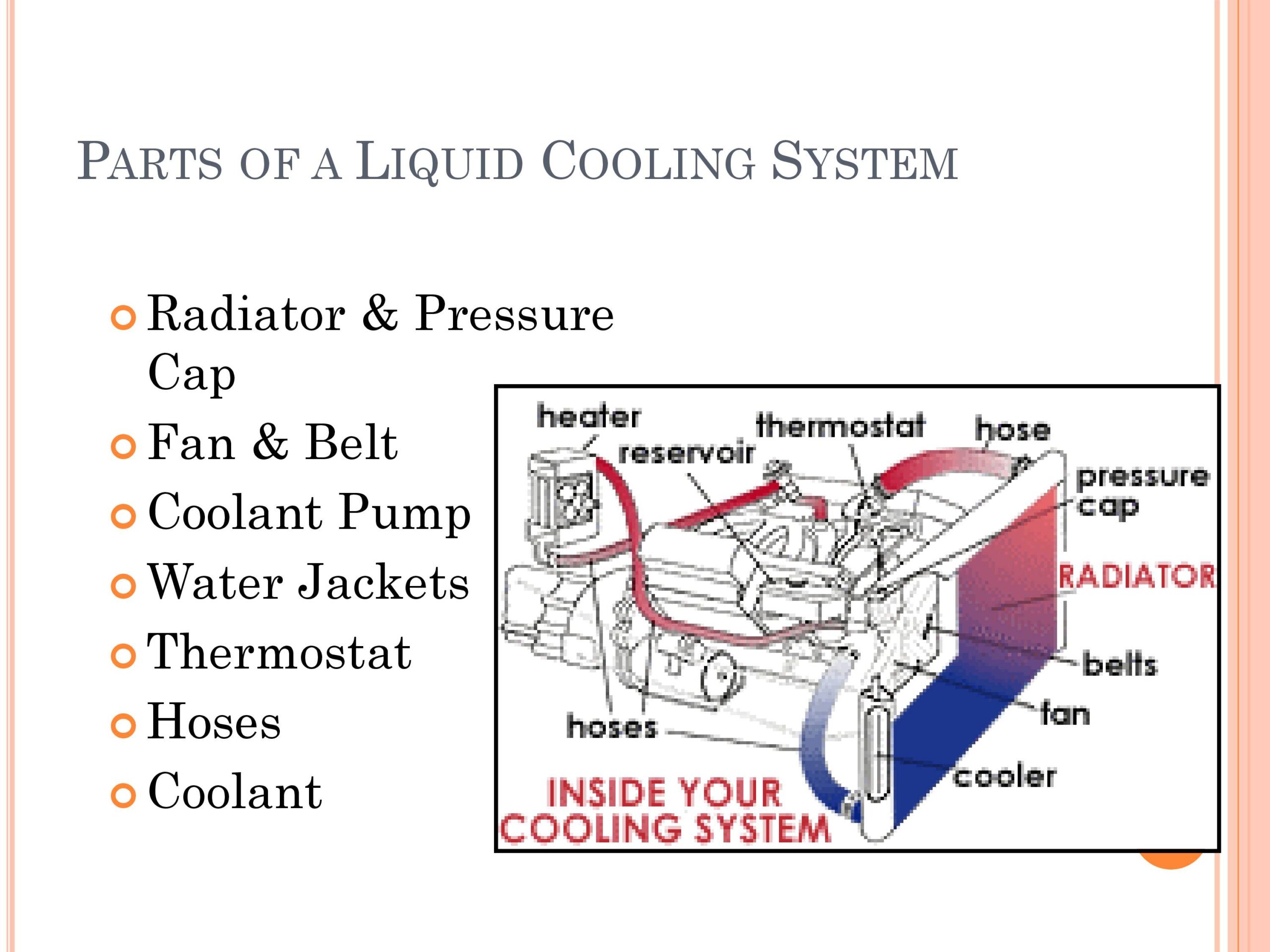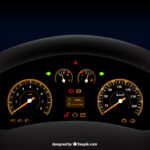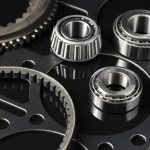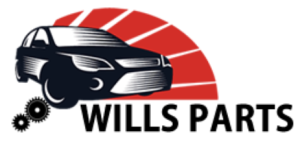Components of Engine Cooling System

Below are the components of the cooling system in an internal combustion engine and their functions:
Radiator:
This radiator-like component for cooling the engine is constructed of strips that zigzag between the tubes of aluminum. Through a hose, hot fluid is pumped inside the radiator. After leaving the tube, the heated fluid is subsequently transferred to the air stream and expelled into the atmosphere.
Cooling Fan:
The cooling fan is the component that is closest to the engine and is where the cooling fan is situated. Airflow is directed and fingers are protected by the component. The radiator’s temperature is lowered by the fan, which circulates air through the radiator to cool the hot fluid while the engine is operating.
The car’s computer operates a contemporary electric fan. Temperature information is sent to the ECU by a sensor that continuously checks the engine’s temperature.
Pressure Cap and Reserve Tank: Radiators are now equipped with pressure caps that allow pressurized coolant to flow out when it expands. Reserve tanks are now included. Thus, the pressurize cap’s purpose is to keep the cooling system’s pressure constant up to a specific point. This cap had a spring valve that was calibrated in pounds per square inch (psi). If the pressure rises over the predetermined pressure points, the valve opens, allowing some coolant to drain off.
The coolant that leaks from the pressure cap is collected in a reservoir called the reserve tank. The tank, which is normally composed of plastic, can show the coolant’s temperature.
Water Pump: Another crucial part of the engine cooling system is the water pump. As long as the engine is running, it maintains the coolant circulating and is located on the front of the engine. The component has an impeller blade that pumps the coolant and is composed of cast iron or cast aluminum.
Thermostat: A thermostat is merely a valve that detects or gauges the engine coolant’s temperature. The thermostat remains closed if the coolant isn’t hot enough, but as soon as it reaches a certain temperature, it opens and lets the coolant flow through the radiator.
Heater Core: When necessary, hot coolant is far more beneficial for the car’s interior. In order to accomplish this, the cooling system is built with a heater core that closely resembles the radiator. Rubber hoses are used to link the part, which is used to gather and transfer coolant from the water pump to the engine’s top. The heater core is blown by a fan blower, and the heated coolant subsequently heats the interior of the car.
Hoses: Hoses allow for the complete circulation of coolant from the radiator to an internal engine component and back to the radiator and a few associated components. However, the upper and lower radiator hoses are the names of the principal hoses. Compared to others, they are larger and wider.
Bypass System: When the engine coolant is heated enough to open the thermostat, the bypass system kicks in. In order to balance the coolant temperature, it enables the coolant to skip the radiator and return straight to the engine. Rubber hose is frequently available, however some manufacturers also utilize fixed steel tubes.
Cylinder Head Gaskets and Intake Manifold Gaskets: As it tightly seals the combustion chamber’s mating surfaces, this part also aids the engine cooling system. It stops coolant and oil leaks into the combustion chamber or out of the engine. Coolant can still pass through the mating surfaces even when they are tightly machined and precisely matched. The use of gaskets is due to this.
Freeze Plugs: This is an engine component that was created using unique sand and molten metal. It took on the form of the engine block’s coolant passages. The need to patch the hole is due to the fact that coolant runs through the component otherwise the coolant will just spill out.

CHECK OUR NEXT POST ON THE TYPES OF COOLING SYSTEM







